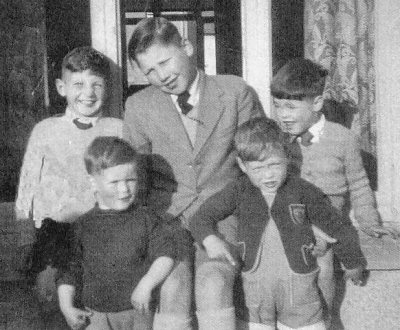All our contests and competitions were centred on the use of the ball-bearing buggy.
We had no interest in tortoise v hare events – especially since we were the tortoises!
Occasionally the proud owners of the professionally-manufactured guiders would butt in, and line up uninvited at our starting point near to the Egyptian Arch.
We pretended not to notice them.
By the time we reached the finishing line at the horse trough at the foot of the
No loss! They were outcasts. Damned for their parents’ relative wealth! Spoilers of our noble, long-established tradition of thunderous-sounding buggies!
Later, at school, a certain poem I learned, though of a different, adult technology, seemed to reflect their role ….
The Welsh priest-poet R S Thomas wrote movingly, though his hero, a farmer – his new contraption, a motorised tractor – was supplanting the farm-horse of old.
— —
‘Ah, you should see Cynddylan on a tractor.
Gone the old look that yoked him to the soil!
He’s a new man now, part of the machine,
His nerves of metal and his blood oil.
The clutch curses, but the gears obey
His least bidding, and lo, he’s away
Out of the farmyard, scattering hens.
Riding to work now as a great man should,
He is the knight-at-arms, breaking the fields’
Mirror of silence, emptying the wood
Of foxes and squirrels and bright jays.
The sun comes over the tall trees
Kindling the hedges, but not for him
Who runs his engine on a different fuel.
And all the birds are singing, bills wide in vain
As Cynddylan passes proudly down the lane.’
No doubt many’s the proud parent, purchaser of the gleaming guider, looked on approvingly as though a vital rite of passage had been bought for the growing boy, as he attempted to ‘lord’ it (or as a ‘knight-at-arms’) over his lesser peers!
We ‘lesser peers’ of course, read it differently. And just so long as we could resist the encroaching commercialisation, we ensured that the opposite was the case!
Amongst ourselves there was a strict code.
Our ball-bearing carts had to be roughly equal to begin with.
Only after that would we compare designs, to gauge a. which wheel size/combination worked best b. which axle grease best minimised friction with the riding board above it (hurrah again for the dobbin flinched from idle carriages in the adjacent railway sidings) c. which cord type worked best for guidance and whether it was best tied or fastened with nails d. whether the use of 3 in 1 oil to lubricate the ball-bearings was permitted e. what was the best braking system to employ.
There were many other weighty affairs like that.
The chief problem, of course, was in attaching the front axle to the riding board.
It had to remain moveable, even with the weight of the rider on board.
It was, after all, the guidance system.
In
……… more …………
